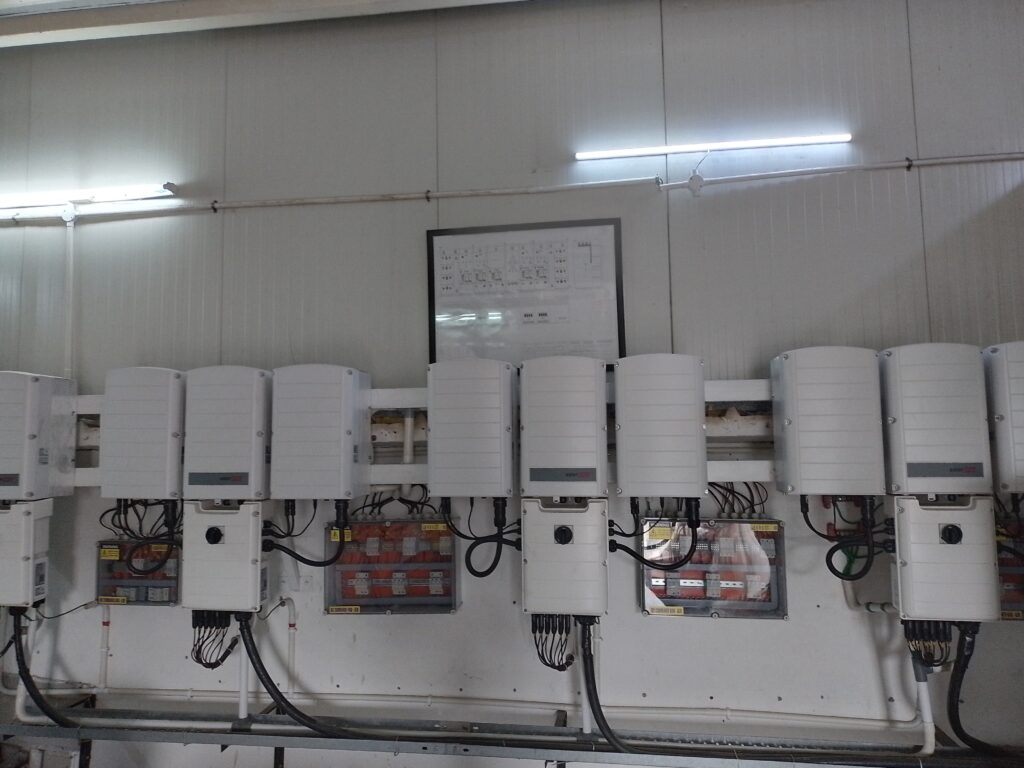Introduction of Solar inverter
As the world shifts its focus towards renewable energy sources, solar power has become one of the most popular forms of clean energy. Solar panels generate direct current (DC) electricity from the sun’s energy, which is then converted into alternating current (AC) electricity through a device called a solar inverter. In this blog, we will explore how solar inverters work, their different types, and their importance in solar power systems.
What is a Solar Inverter?
A solar inverter is a device that converts the DC electricity generated by solar panels into AC electricity that can be used to power homes and businesses. Inverters play a critical role in solar power systems, as they are responsible for converting the raw energy produced by solar panels into a usable form of electricity.
Types of Solar Inverter
There are several types of solar inverters available in the market, and each type has its unique features and functionalities. Let’s take a closer look at each of these types.
- String Inverters: String inverters are the most common type of solar inverter used in residential and commercial solar installations. They are named so because they are designed to work with a string of solar panels connected in series. String inverters convert the DC electricity generated by the solar panels into AC electricity that can be used by appliances and electronics.
- Microinverters: Microinverters are smaller inverters that are designed to be installed on each individual solar panel. Unlike string inverters, which convert the electricity from an entire string of panels, microinverters convert the electricity from each panel individually. Microinverters provide several benefits, including increased efficiency, better performance, and enhanced safety.
- Hybrid Inverters: Hybrid inverters are designed to work with solar panels and energy storage systems, such as batteries. They can convert DC electricity from solar panels into AC electricity for immediate use, and they can also store excess energy in batteries for later use. Hybrid inverters are an excellent option for homeowners and businesses looking to maximize their energy independence.
- Grid-Tied Inverters: Grid-tied inverters are designed to work with utility power grids. They are designed to automatically adjust the amount of electricity they produce based on the amount of electricity being used by the home or business. Grid-tied inverters can also send excess electricity back to the grid, allowing homeowners and businesses to earn credits on their energy bills.
How do Solar Inverters Work?
Now that we have discussed the different types of solar inverters let’s dive into how solar inverters work. The process of converting DC electricity into AC electricity involves several steps, which are outlined below.
- Maximum Power Point Tracking (MPPT): The first step in the process is to optimize the amount of electricity generated by the solar panels. This is done through a process called Maximum Power Point Tracking (MPPT), which ensures that the inverter is producing the maximum amount of electricity possible.
- DC to AC Conversion: After the MPPT process is complete, the inverter converts the DC electricity generated by the solar panels into AC electricity that can be used to power homes and businesses. This process involves the use of several electrical components, including diodes, capacitors, and transformers.
- Synchronization: The next step in the process is synchronization, which ensures that the AC electricity produced by the inverter is synchronized with the electricity being used by the home or business. This is important because it ensures that the electricity being used is safe and stable.
- Grid Connection: If the solar power system is connected to a utility grid, the inverter must be connected to the grid through a process called grid connection. This involves ensuring that the inverter is producing the correct voltage and frequency to be compatible with the grid.
- Monitoring: Finally Solar inverter monitoring is the process of tracking and analyzing the performance of a solar inverter and the solar PV system it is connected to. The purpose of monitoring is to ensure that the solar PV system is operating at its maximum efficiency, and to identify any issues that may affect its performance.
conclusion
In conclusion, a solar inverter is a critical component in any solar PV system. Its primary function is to convert the DC electricity generated by solar panels into AC electricity that can be used by homes and businesses. The inverter plays a critical role in ensuring the efficiency and reliability of a solar PV system, as well as its ability to integrate with the larger electrical grid.
Friends, I hope that in this blog, How does a solar inverter work?, What is a Solar Inverter?, Types of Solar Inverters, All these questions must have been answered.
If you have any more questions about Solar Inverters, then do comment below. I will surely reply to your comment.
Friends, if you like this blog, then definitely share it.
Thank you
Read other posts below and enhance your knowledge-
What Is Solar Zero Export Device?
Please Share
